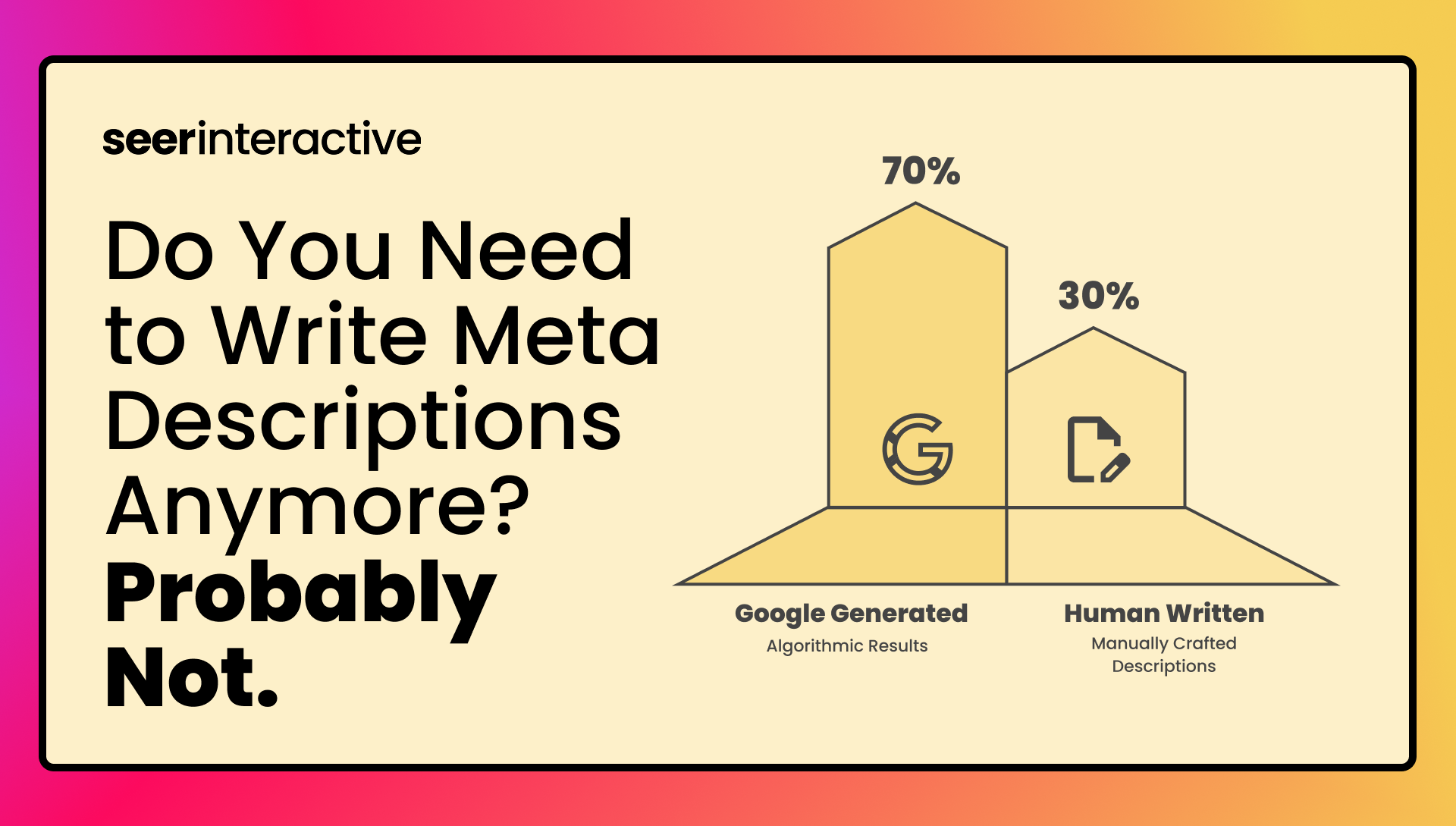When beginning any SEO campaign, it’s difficult to formulate an appropriate strategy prior to understanding your competition in the search engine results. Who is ranking where, and what might be the reasons? Sure you could dive right into a stellar RCS campaign and earn some wins, but you may have missed out on the easy opportunities that your competitors have already utilized. In my time as an SEO I’ve analyzed competition across many industries.
The following is a checklist of questions I run through for competitive analysis, and some of the tools I use to answer them.
As each industry is different, not every one of these will directly identify opportunities for success every time. However, in competitive analysis it is more about a process of elimination in order to find what stands out. What is that one thing that each of your competitors have that you don’t? What is the one thing that the leading site in the industry has that nobody else does? Why does that crappy DA 27 site rank ahead of my trusted brand?!?!?!!? Run through this list and you’ll be on your way to answers.
What kinds of links is my competitor getting?
A great tool to give you a breakdown of link types is Eppie Vojt’s tool, Link Detective. Simply download a site’s backlinks as a CSV from ahrefs or Moz. Upload them to Link Detective, and VOILA…it makes this colorful pie chart that breaks the links down by percentage into various types.

You can also filter the links to only include specific types. For the pie chart above I chose not to show Dead or Unknown links. Though it’s too big an image for this post, the tool also provides a table of all links with URL, title, anchor text, page authority, domain authority, and type. Want to see only the directories, easy, just change the filter.
I also like looking at the TLD types my competitors have linking to them. If they all have over 20% of their links coming from .edu and .gov sites, maybe there’s something there I need to look in to. OSE makes it incredibly easy to see the TLD distribution, under the Linking Domains tab. Here’s an example of 3 sites compared by their TLD links:

It looks like competitor 1 has a larger percentage of .edu and .gov links, maybe looking in to those links will shed some light on why they're outranking my site.
Are my competitor’s links significantly more valuable than mine as far as metrics go?
Go in to the CSV of your competitor’s backlinks, either from OSE or LinkDetective, and remove all columns except for URL, Page Authority, Domain Authority, and Number of Domain Links to Page. I’m assuming you know how to use Find/Replace and Remove Duplicates magic to get this done, but if not then leave a comment and I’ll help you out. You’re sheet should look like this:

Now go to WolphramAlpha and click the Data Input icon under the search box.

That will bring up a box in which you will copy all the data from your Excel table and paste it right in. Click "Use without Saving" and it’ll begin computing. When finished, it’ll give you all sorts of intriguing looking presentations of your data. My favorite is the Smooth 3D Histogram showing Page Authority vs. Domain Authority, as seen here:

Other than a few high domain-medium page authority links, the tall purple spike in the left corner shows me that my competitor has a lot of lower quality links! Another interesting part of WolphramAlpha is that it provides a handful of sentences about whether particular metrics correlate or not. I’ve only just begun to play with WolphramAlpha (props to Nico Miceli for telling me about it), but I think there is gold to be found if you feed it the right type of data. Play around with it and if you find something cool, please share it!
Occasionally I also look at MajesticSEO’s Citation Flow and Trust Flow. These metrics try to give an idea of how influential a site might be (Citation Flow) and how trustworthy it is based on whether the sites linking to it are also trustworthy (Trust Flow). After all, honest trustworthy people should tend to make friends with other honest trustworthy people, right? When you’ve compared the # of links, metrics of links, your competitor’s metrics, and it doesn’t seem to add up…take a look at Citation and Trust Flow. If your competitor has higher scores, maybe you need to acquire links from more trustworthy sites, rather than having too much magenta in the bottom left corner, like in this image.

Barry Schwartz’s post on SearchEngineLand goes over these metrics in more detail.
How did my competitor acquire these links?
We’re going to use TagCrowd to give us an idea of where some of their links may have come from. This doesn’t give us significant hints every time, but it only takes a few minutes and I’ve seen it provide some great insights in to what a competitor’s strategy may have been. I drop both the URLs and the page titles in to tag crowd, separately of course, but for this post I’ll go over the URLs. Download the CSV of backlinks from OSE. Use the following filters:

So your tag cloud doesn’t get cluttered with things like http, www, and html, we want to clean the URLs with several Find-and-Replaces. Record a Macro (in the Developr tab of Excel) when you do this so you can use it again without having to type it all in. Then press Control+F to open the Find and Replace window as seen here.

You’ll want to replace the following with nothing:
http://, www., .html, .htm, .aspx, .asp, .php, .com, and any other things that will just get in the way.
Seeing http in the tag cloud tells us nothing of value and only pushes down a valuable word like "donate" or "giveaway". Also be sure to replace slashes, periods, dashes, and underscores with a single space. Here is an example of what the URL will look like...
before: https://www.seerinteractive.com/insights/competitive-analysis-tips-tools
and after: seerinteractive insights competitive analysis tips tools
Then copy and paste all of your cleaned URLs into TagCrowd. Here are some examples of what you might get:

It looks like this competitor (above) may be sponsoring a lot of foundations and events.

It looks like this site (above) has been hitting up bloggers to host giveaways and reviews.
Does my competitor deserve to have all these links?
There are cases in which your competitor is simply providing more helpful resources to users than you are, so they do deserve to outrank you. This is easy to discover by looking at the Top Pages tab in OSE and looking for resource pages with a lot of links or social shares. Here’s an example, with the site’s name covered up:

Perhaps it’s time you started creating something that people naturally WANT to link to rather than trying to persuade or bribe them to link to your deep pages.
Are there sites that link to each of my competitors, but not me?
You can use link intersect tools from Moz or ahrefs. Once you have your CSV, delete columns A, C through O, S, V, and Y. Sure there’s useful data in those columns, but I just want to see what sites are linking to my competitors, but not to me. I’m also interested in the Citation and Trust Flow of those sites and the last time they linked to my competitors. Format your data as a table and then filter the Backlinks to Your Site column to only show 0, or in other words the sites that don’t link to you. You should end up with a table like this:

As you can see above, the competitors have links (recently!) from msn.com, usatoday.com, and other valuable sites that my site does not have links from. I may need to formulate a strategy to target these sites in order to level the playing field.
Is my competitor more aggressive with anchor text links?
Sure, we don’t want to go overboard with exact match anchor text links, but if you have enough branded links to balance them out….they can still work in certain industries. Be aggressive; just don’t stand out as the overly aggressive one as that site will be the first to get Cutt by the G-police. Click on the Anchor Text tab in OSE and filter to show links for “all pages on this root domain”. Below is a screenshot of the anchor text distribution of a site in the lighting industry.

It’s pretty obvious what keywords they’re trying to rank for, and I’d actually try to snag a few more branded links to balance this out. However, if you only have 2 links to your site with “outdoor lighting” and these guys are ranking ahead of you for that keyword….you may be able consider being more aggressive. On the other hand, I’ve seen sites that appear as though they should have the upper hand…better page metrics, more links, higher value links, links from relevant sites, great resources….and then you calculate the percentage of links that have their target keyword in the anchor text and realize that 50% of their links are all using the same anchor text, while only 30% of their links actually have their brand name or URL as the anchor text…holy anchor text overkill, batman!!
I looked at all of my competitors' links and it still doesn’t make sense, what else can I look at?
Linking isn’t 100% of the puzzle; there’s also site architecture and content, among other things. I’ll admit there have been occasions in which I spent so much time analyzing the links without finding solid answers, until I realized...maybe I should just open all of the pages ranking above me, put them side by side, and see if my eyes can spot a difference. Doh! That should come first right? Black out all of the headers, footers, navigation, and everything except for the real meat of the pages. Here’s an example of three real sites’ (sorry, no names) homepages:

Based purely on these 3 images, which do you think has the worst ranking? If you guessed the one of the right, you’re correct! Clearly that site has less content, so maybe that has something to do with why the other two sites are outranking it. Also, don’t forget to look at the Title tags and how frequently the keywords are used on the page. Conductor is a great tool that can show you that data, and more, for your site as it compares to each of your competitors.
Try out these methods and see if they work for you. If you need even more tools, check out the Competitive Analysis tab in Annie Cushing’s Google Doc - Must Have Tools. Got any questions, hit me up on Twitter or leave them in the comments section below.
You can also follow me on Twitter @BrianEDonohue.

